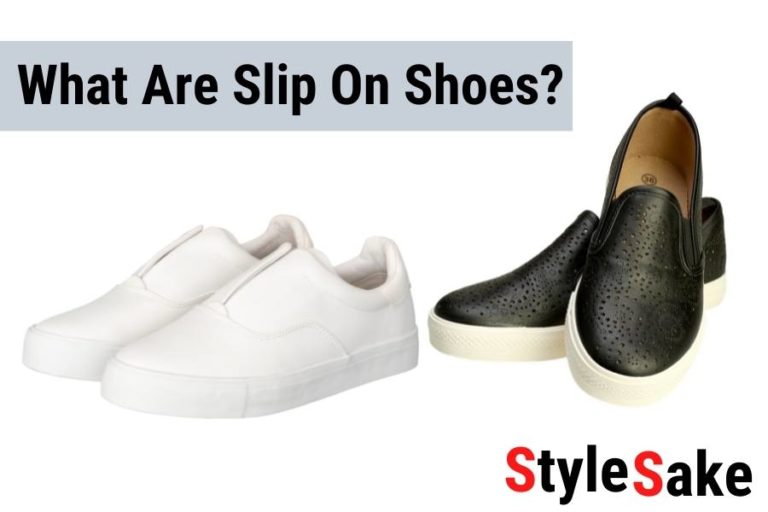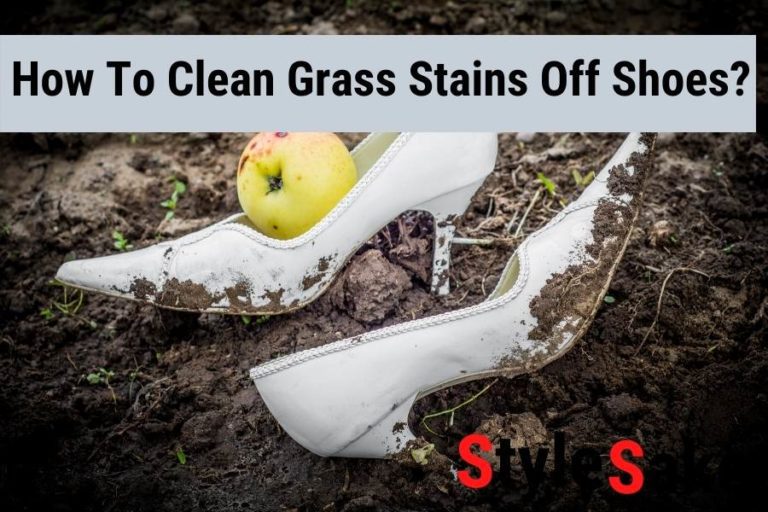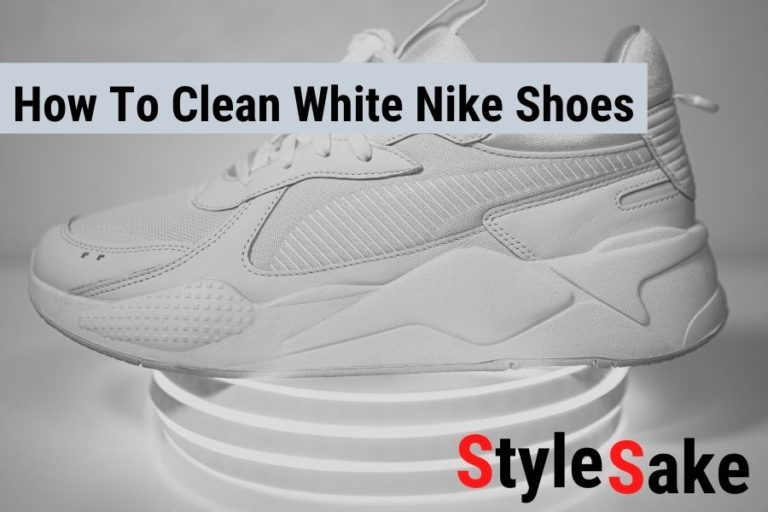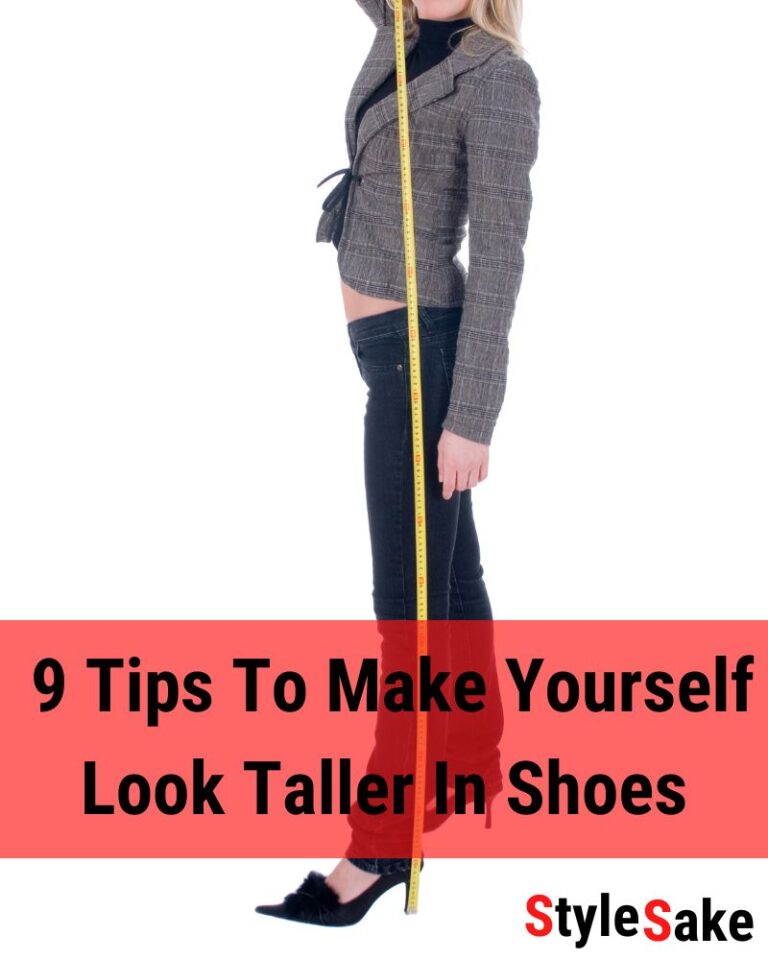What Are Non Marking Shoes? A Detailed Guide in 2023
It happens, sometimes, people are not allowed to enter the court of many sports because of their shoes. For those familiar with playing indoor sports, the concept of these shoes will be obvious.
What are non marking shoes?
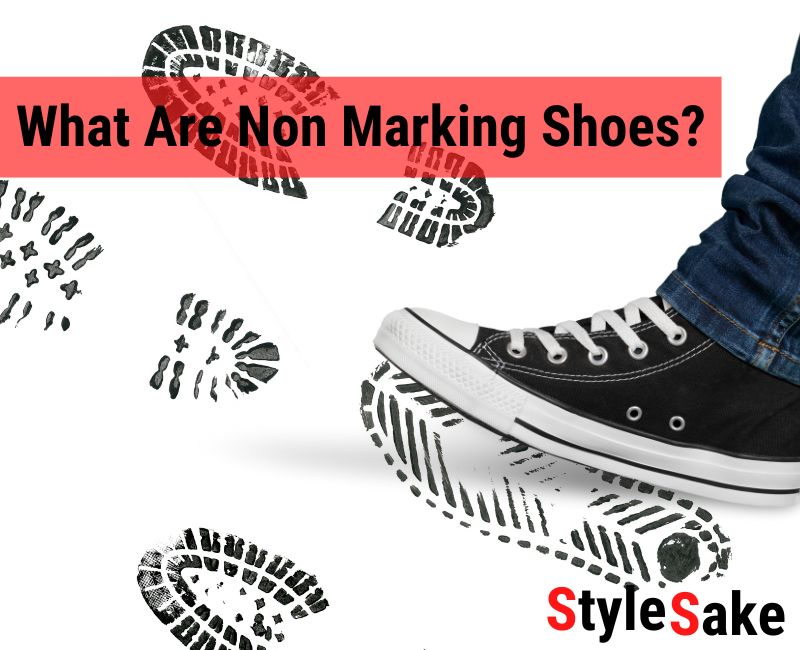
There are many types of shoes out there that are specifically designed for indoor sports or activities. These shoes, generally called non-marking shoes, have a special sole that prevents them from leaving marks on the court surface.
Non marking shoes are an essential piece of equipment for indoor sports. These specialized shoes are designed to leave minimal amounts of residue on the court or playing surface and thus prevent any damage that could be caused by dirt, dust, or other materials being dragged onto the court.
Usually, bedminton and basketball shoes are non marking shoes. Moreover, Canvas shoes tend to have flat sole with non slipping features, so they can also be used as non marking footwear.
By allowing players to take part in a sport without worrying about leaving behind marks and debris, non marking shoes help preserve the integrity of the game. Not only do they protect the court itself but also provide a safer environment for all participants. Non marking shoes come in a variety of styles and colors, so it is easy to find something that matches individual tastes while still offering protection from potential damage.
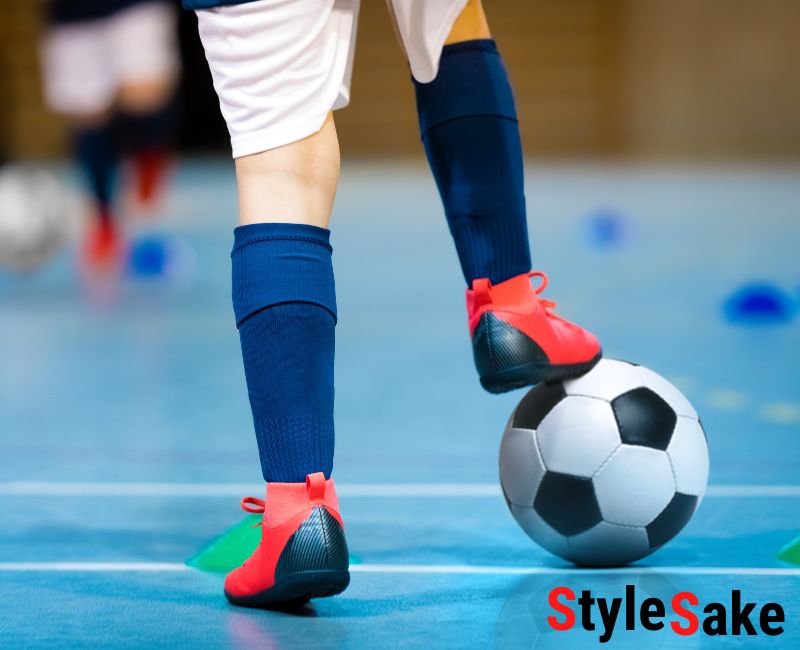
The materials used for these types of shoes must be designed with special attention paid to providing maximum grip without damaging the court surface underneath. Non marking shoes come in various forms, from basketball soles to tennis sneakers, and provide great performance properties while still protecting the court from excess wear and tear.
How can you tell if shoes are non-marking?
Non-marking shoes are typically labeled with a symbol that states the shoe is non-marking. This will either be written on the box or printed directly on the sole of the shoe. Additionally, manufacturers may provide information about their products and what type of sole is used on them. It’s always best to double check before buying to ensure you’re getting the right type of footwear for your needs.
For those who want to play indoors but also want to protect their courts from unnecessary damage, non marking shoes are an excellent choice.
There is a simple test for checking if the shoes are non marking or not, you have to rub the sole of shoes on a piece of white paper, if there is any tearing of paper, then they are not non marking shoes.
You can also rub your shoes on floor and check if it scratches the floor. If there are no scratches then shoes are non marking shoes.
Moreover, you can also observe the outsole of shoes, if it has rough appearance or cleats on it, then these are not non marking shoes.
Marking Shoes Vs Non Marking Shoes
The main difference between marking shoes and non-marking shoes is the type of outsole used. Marking shoes have a hard rubber sole that can leave black scuff marks on court surfaces. Non-marking shoes usually use a softer, lighter, rubber compound or synthetic material with a textured grip pattern that prevents or reduces scuff marks on ground.
Other factors that may vary between marking shoes and non-marking shoes include the types of cushioning materials used in the midsole, the type of ankle support and design features such as lacing systems. Non-marking shoes are often designed to be lightweight and breathable, while marking shoes can be more heavy duty and durable.
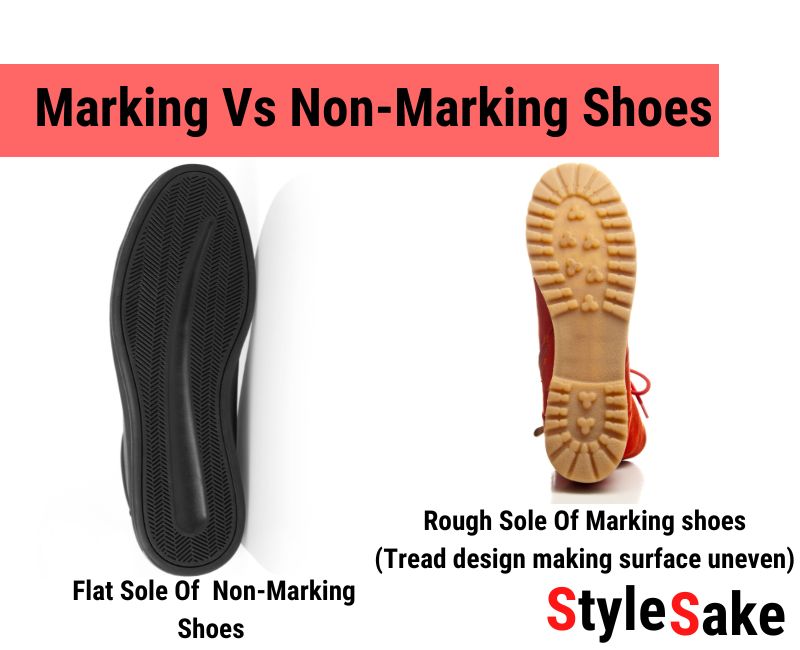
Are non-marking shoes slippery?
Non-marking shoes are designed to provide good grip on the court, but do not typically offer as much grip as regular sneakers on floors and outdoor tracks.
If you’re moving outside or on slippery surfaces then these flat soled shoes will not be helpful and tends to be slippery as compared to non-slip sneakers.
On mud or outside, the tread design on outsole of non marking shoes will be filled with dust and sand causing to loose friction and less grip that will ultimately make the shoes slippery.
So, Non-marking shoes are great for indoor sports, but it is best to avoid them when playing outside or on slippery surfaces. We suggest to look for Slip Resistant Shoes if you are looking for shoes that prevents slipping.
Can we use non marking shoes for walking?
Non marking shoes can be used for walking, but since they are designed to provide grip on the court surface, it is not recommended that you use them for daily activities. Instead, opt for a more casual pair of footwear like non slip sneakers that will still provide adequate protection while protecting the soles of your shoes. Non marking shoes should always be reserved for their specific purpose – indoor sports activities.
Are Asics non-marking?
Many Asics shoes are non-marking, but it is important to check the sole before purchasing to make sure. If a shoe is labeled as “non-marking” or has a symbol on the box or sole of the shoe that indicates that it is suitable for indoor sports, then you can be sure.
Which Brands make non marking shoes?
Many popular shoe brands make non marking shoes, such as Nike, Adidas, Reebok, Puma and Asics. Additionally, there are several specialty brands that specialize in making these types of shoes, like K-Swiss and Converse.
Are Tennis shoes non marking?
Tennis shoes can be both marking and non-marking depending on the sole used. Generally, if a shoe is labeled as non-marking or has an icon on the box or sole of the shoe that indicates it is suitable for indoor sports, then it is non-marking.
It is important to note that all tennis shoes are designed to provide traction and grip on the court surface, so make sure you check the sole before buying to be sure.
Are sports shoes non marking shoes?
Most sports shoes, such as those for basketball, tennis, and running, are non-marking. This means they won’t scuff the court or playing surface, and can prevent damage during play. But this is not always the case, as some shoes may still leave marks. It’s important to check the label or description of any shoe you buy to make sure it won’t mark court surfaces. Many sports stores also offer non-marking versions of their products specifically for indoor play and other delicate floors.
Does Nike manufacture non marking shoes?
Yes, Nike does offer non-marking shoes. They make a range of sneakers and other footwear designed to be non-marking on courts or playing surfaces. Many Nike shoes have rubber soles suitable for indoor use that won’t leave behind any marks or scuffs.
Some of Nike’s most popular non-marking models include the Air Zoom Infinity Tour, Air Zoom Vapor Cage 4, Air Zoom Vapor X, and Zoom Zero Gravity. The Zoom Pegasus series of running shoes is also designed to not leave marks on court surfaces. Nike’s Hypercourt range of tennis shoes has rubber outsoles for excellent grip and durability, and also won’t leave any marks on court surfaces.
Are there any non-marking shoes for squash?
Yes, there are non-marking shoes specifically designed for squash. Nike’s Hypercourt range of shoes is a great example, as it has rubber outsoles and is designed to provide excellent traction on the court. Adidas also offers a range of squash shoes with non-marking outsoles, as well as other brands such as Asics, K-Swiss, and Head.
Are Skechers non marking soles?
Yes, Skechers do offer non-marking shoe soles. Many of their shoes feature rubber outsoles that won’t mark or scuff court surfaces or other delicate floors. Some models like the Skechers Go Walk 5 and the Flex Appeal 2.0 have non-marking outsoles specifically for indoor use.
Are vans non-marking?
Yes, some Vans shoes are non-marking. The brand offers several models designed with rubber outsoles that won’t scuff or leave marks on court surfaces. Examples include the Sk8-Hi Reissue Pro, Slip-On Pro, and the UltraRange Rapidweld.
Why should we use non-marking shoes for badminton?
Non-marking shoes are essential for badminton, as they prevent any accidental scuffs and marks being left on the court. Non-marking shoes also provide a great amount of grip, helping to improve your performance during play. So if you’re looking for the best footwear for badminton, make sure to pick up some non-marking shoes.
Which Sports Require Non Marking Shoes?
Non-marking shoes are necessary for most indoor sports such as basketball, badminton, squash, tennis, and volleyball. Many gyms and courts require non-marking shoes for safety reasons and to help preserve the quality of their flooring.
